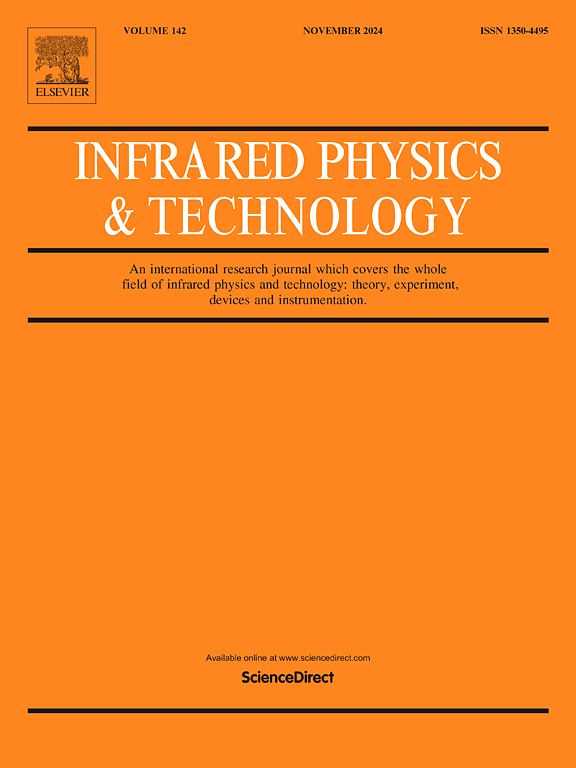High-power single longitudinal-mode thulium-doped fiber laser based on a composite cavity seed source
IF 3.1
3区 物理与天体物理
Q2 INSTRUMENTS & INSTRUMENTATION
引用次数: 0
Abstract
We propose and have demonstrated a single longitudinal mode (SLM) thulium-doped fiber laser (TDFL) in the 2-μm wavelength range and have amplified its output power to achieve high power output. The seed source employs a uniform fiber Bragg grating (UFBG) and a passive sub-ring cavity filter composed of two 3 × 3 couplers to achieve single longitudinal mode selection, resulting in stable single longitudinal mode lasing. This paper explains the design and fabrication of a dual-coupler composite cavity filter (DC-DRC) sub-ring cavity, analyzes the SLM selection mechanism, and reports a seed-source output of 10 mW of SLM laser power at a center wavelength of 1940.79 nm, with a 3 dB spectral bandwidth of 0.05 nm and an optical signal-to-noise ratio (OSNR) greater than 70 dB, the line width of the seed source is approximately 2.91 kHz. The seed laser is amplified using a master oscillator power amplifier (MOPA) system, achieving an average output power of 15.36 W and a slope efficiency of approximately 31 %. At maximum output power, no stimulated Brillouin scattering (SBS) or gain saturation was observed at the reverse monitoring end. We discuss in detail the system architecture and key considerations for power amplification.
基于复合腔源的高功率单纵模掺铥光纤激光器
我们提出并演示了一种2 μm波长范围的单纵模掺铥光纤激光器(TDFL),并对其输出功率进行了放大以实现高功率输出。种子源采用均匀光纤布拉格光栅(UFBG)和由两个3 × 3耦合器组成的无源子环腔滤波器实现单纵模选择,产生稳定的单纵模激光。本文阐述了双耦合器复合腔滤波器(DC-DRC)子环腔的设计与制作,分析了SLM选择机理,并报道了在中心波长1940.79 nm处输出10 mW SLM激光功率的种子源,其3db频谱带宽为0.05 nm,光信噪比(OSNR)大于70 dB,种子源的线宽约为2.91 kHz。采用主振荡器功率放大器(MOPA)系统对种子激光器进行放大,平均输出功率为15.36 W,斜率效率约为31%。在最大输出功率下,反向监测端没有观察到受激布里渊散射(SBS)和增益饱和。我们详细讨论了系统架构和功率放大的关键考虑因素。
本文章由计算机程序翻译,如有差异,请以英文原文为准。
求助全文
约1分钟内获得全文
求助全文
来源期刊
CiteScore
5.70
自引率
12.10%
发文量
400
审稿时长
67 days
期刊介绍:
The Journal covers the entire field of infrared physics and technology: theory, experiment, application, devices and instrumentation. Infrared'' is defined as covering the near, mid and far infrared (terahertz) regions from 0.75um (750nm) to 1mm (300GHz.) Submissions in the 300GHz to 100GHz region may be accepted at the editors discretion if their content is relevant to shorter wavelengths. Submissions must be primarily concerned with and directly relevant to this spectral region.
Its core topics can be summarized as the generation, propagation and detection, of infrared radiation; the associated optics, materials and devices; and its use in all fields of science, industry, engineering and medicine.
Infrared techniques occur in many different fields, notably spectroscopy and interferometry; material characterization and processing; atmospheric physics, astronomy and space research. Scientific aspects include lasers, quantum optics, quantum electronics, image processing and semiconductor physics. Some important applications are medical diagnostics and treatment, industrial inspection and environmental monitoring.

 求助内容:
求助内容: 应助结果提醒方式:
应助结果提醒方式:


